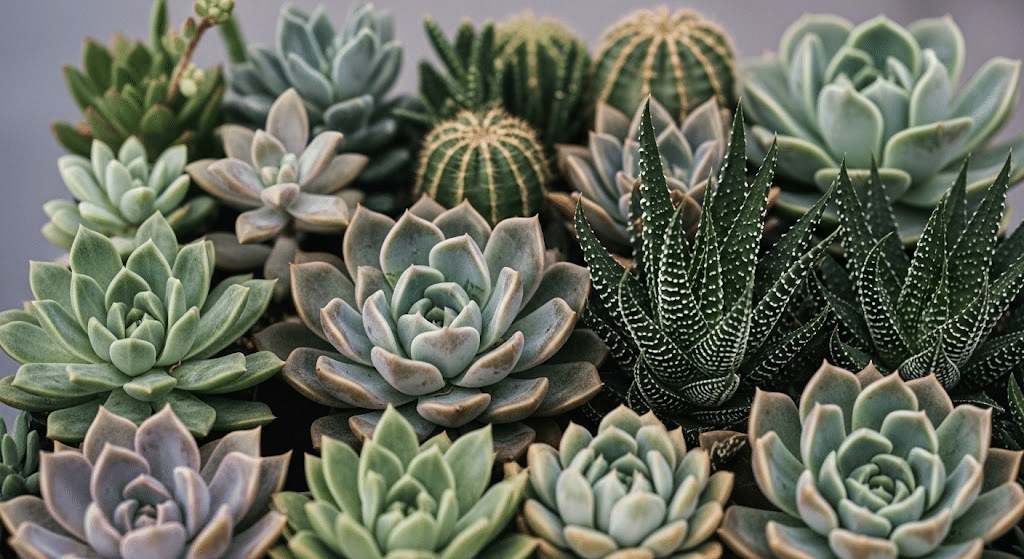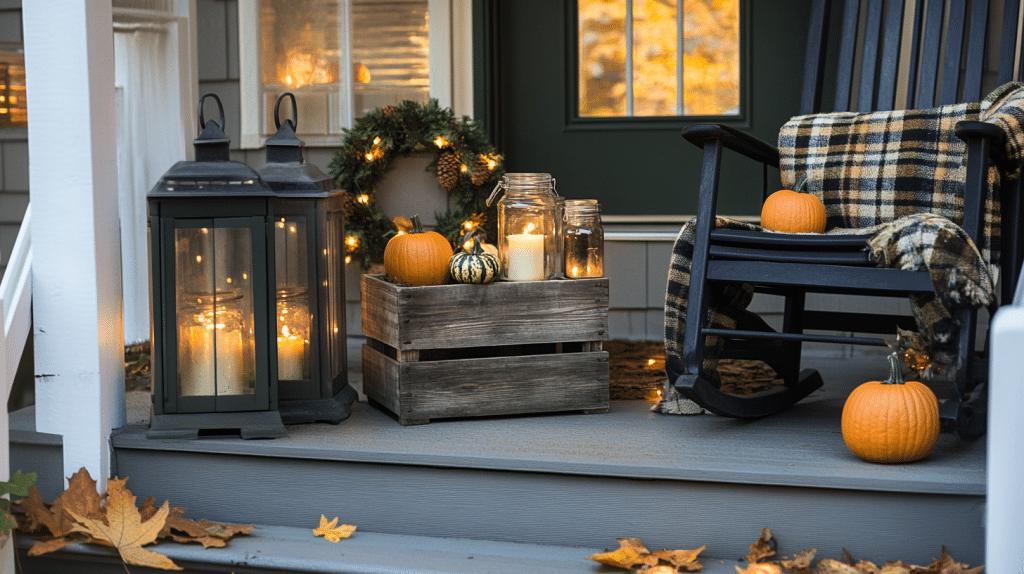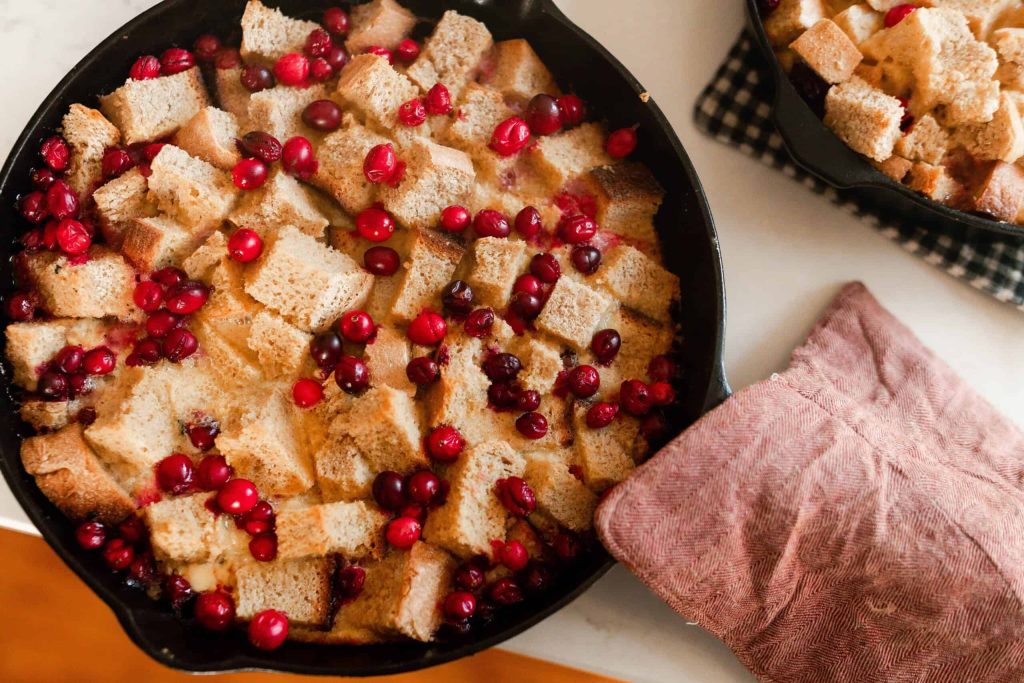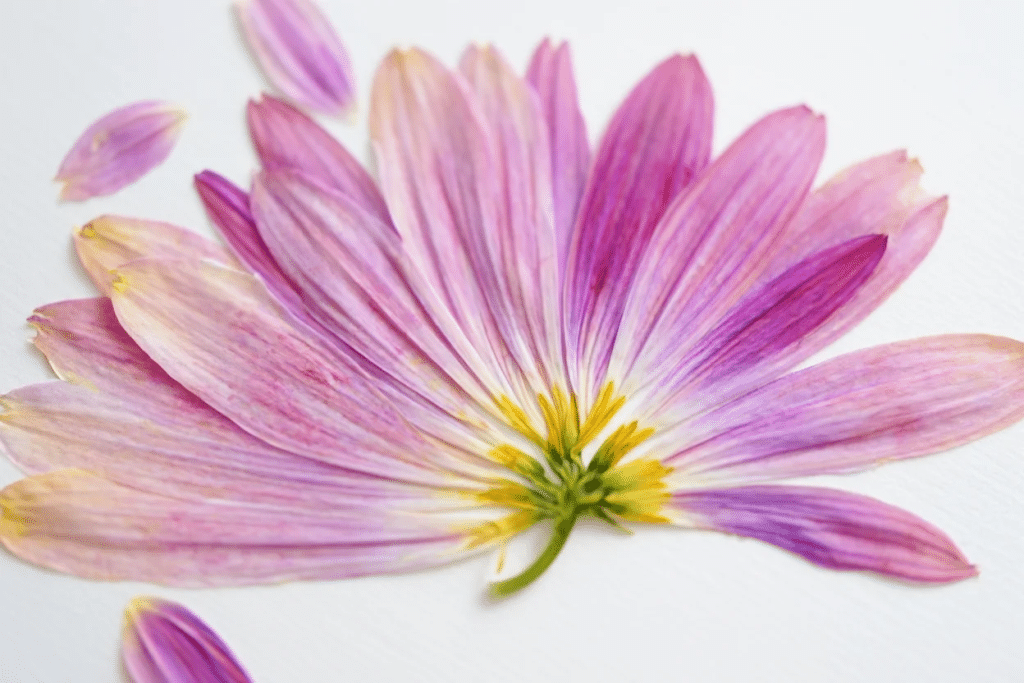Starting a succulent garden can be intimidating when you’re unsure about the ideal soil, pot size, or watering schedule.
Learning how to plant succulents properly will save you time, money, and frustration. I’ll show you simple techniques that work every time.
This blog covers everything from choosing the right containers and soil mix to proper planting depth and initial care. You’ll get instructions that make the process easy and fun. By the end, you’ll feel confident planting any succulent variety without needing to look up how to plant succulents.
Ready to start your succulent planting success? Let’s get your hands dirty!
Why Succulent Plants are Ideal for Beginners in Gardening
Succulents make perfect starter plants because they forgive your mistakes. You can forget to water them for weeks, and they’ll still look great. That’s because these plants store water in their thick leaves and stems.
Most houseplants need daily attention, but succulents thrive on neglect. They prefer dry soil over wet conditions. This means less worry about overwatering, which is the leading cause of plant death.
These plants also grow slowly, so you won’t need to repot them often. When you do want more plants, learning how to propagate succulents is surprisingly simple. Many varieties grow new plants from just a single leaf! Propagating succulents costs nothing and gives you endless new plants to enjoy or share with friends.
Succulents come in hundreds of shapes, colors, and sizes. You can start with common varieties, such as jade plants or aloe vera. Both are nearly impossible to kill and look beautiful on any windowsill.
Choosing the Right Pot, Soil, and Care Conditions
Pots: Pick a pot with drainage holes to prevent water from pooling and causing root rot. Terracotta pots work best because they dry out quickly and allow air to reach roots.
Soil: Succulents need well-draining soil to thrive. Use store-bought cactus mix for convenience, or create your own by combining 1 part potting soil, 1 part perlite, and 1 part coarse sand. Avoid regular potting soil, which holds too much water.
Light and Temperature: Provide bright, indirect light for at least 6 hours daily. South-facing windows work well, but avoid direct midday sun to prevent leaf burn. Use grow lights during the darker months. Keep temperatures above 50°F, with 60-80°F being ideal for most varieties.
Watering Schedule: Water every 10-14 days during spring and summer, ensuring soil dries completely between waterings. Reduce to every 3-4 weeks in winter. Check soil moisture with your finger; only water when the top inch feels bone-dry. Water thoroughly until it drains from the bottom.
Learning How to Plant Succulents
Planting succulents is simple, but the proper setup is key to their success. Below are some detailed steps with image references to help you with your question of how to plant succulents
Step 1: Prep the Pot
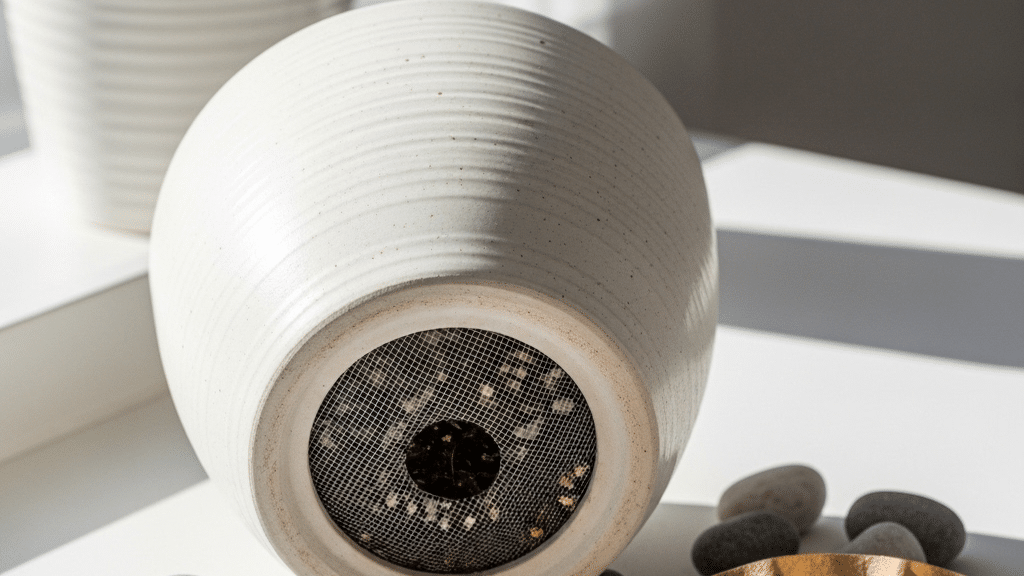
Cover the drainage hole with a small piece of mesh, a coffee filter, or pebbles to keep the soil in while allowing water to escape. This prevents soil from washing out when you water your plant.
Make sure the covering doesn’t block water flow completely – you want drainage, not a dam.
Step 2: Add Soil
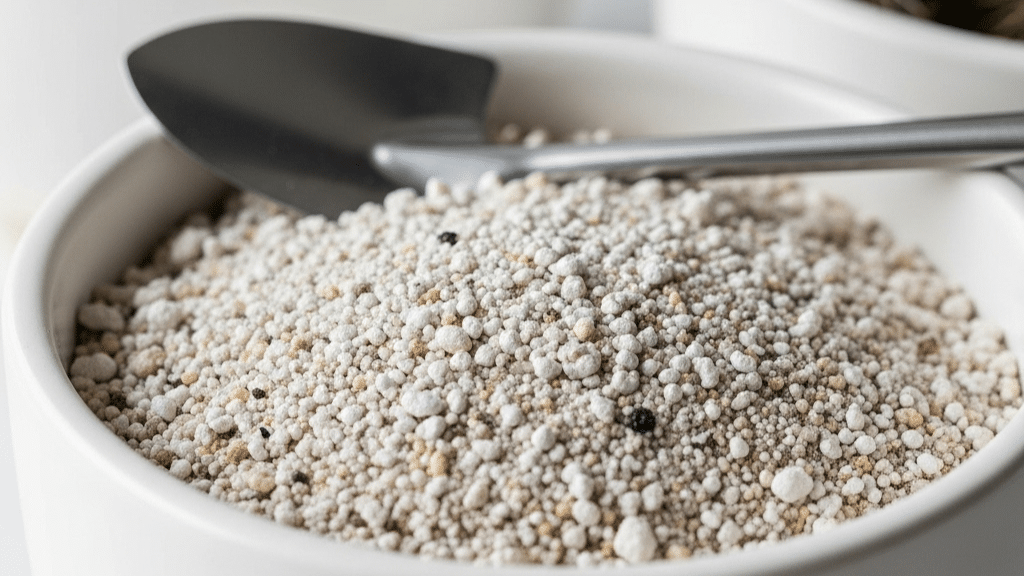
Fill the pot with your soil mix, leaving space for the plant’s roots. Don’t pack the soil down too tightly – succulents like loose, airy soil around their roots. Fill the pot with about one-third to half of its capacity, depending on the root size of your plant.
Step 3: Remove the Succulent
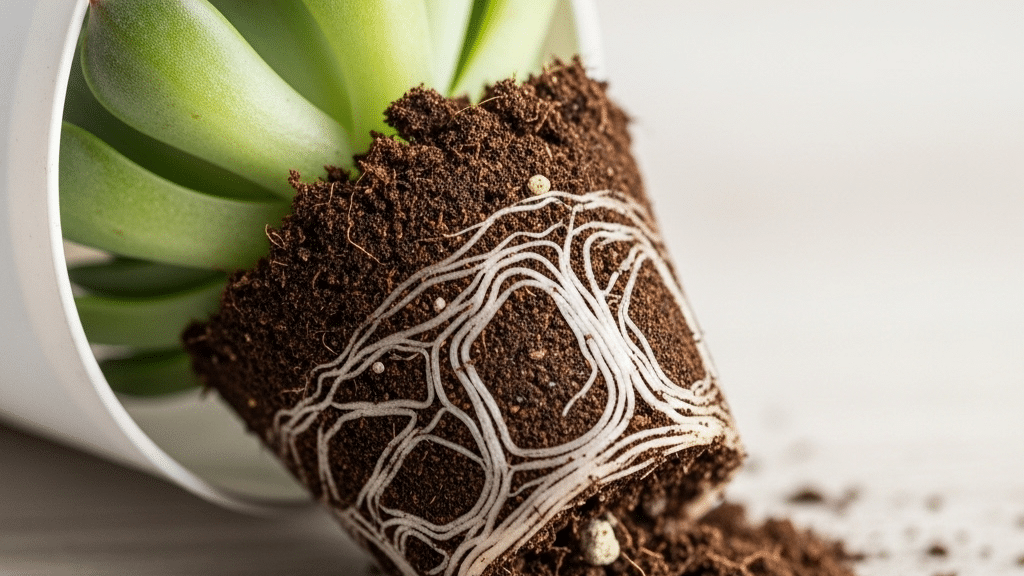
Gently squeeze the nursery pot to loosen the plant and remove it. Shake off excess soil and gently untangle any tightly bound roots. If roots are circling around the bottom, carefully tease them apart with your fingers.
This helps them spread into the new soil instead of staying in a tight ball.
Step 4: Plant It
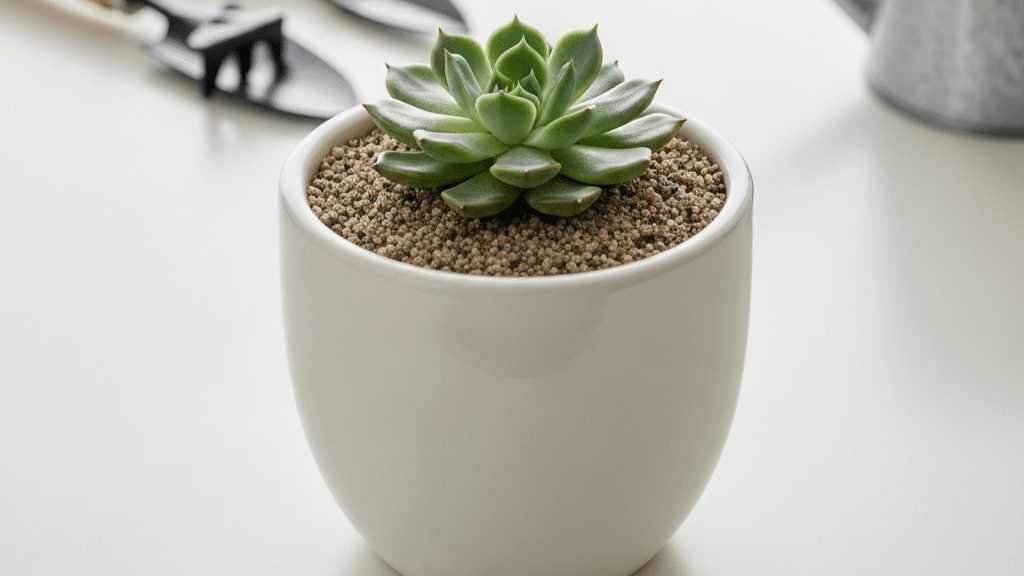
Place the succulent in the pot, keeping the leaves above the soil line to avoid rot. Fill in around the roots with more soil and press lightly to secure.
The plant should sit at the same depth it was in the nursery pot. Don’t bury the stem or leaves under the soil.
Step 5: Top It Off
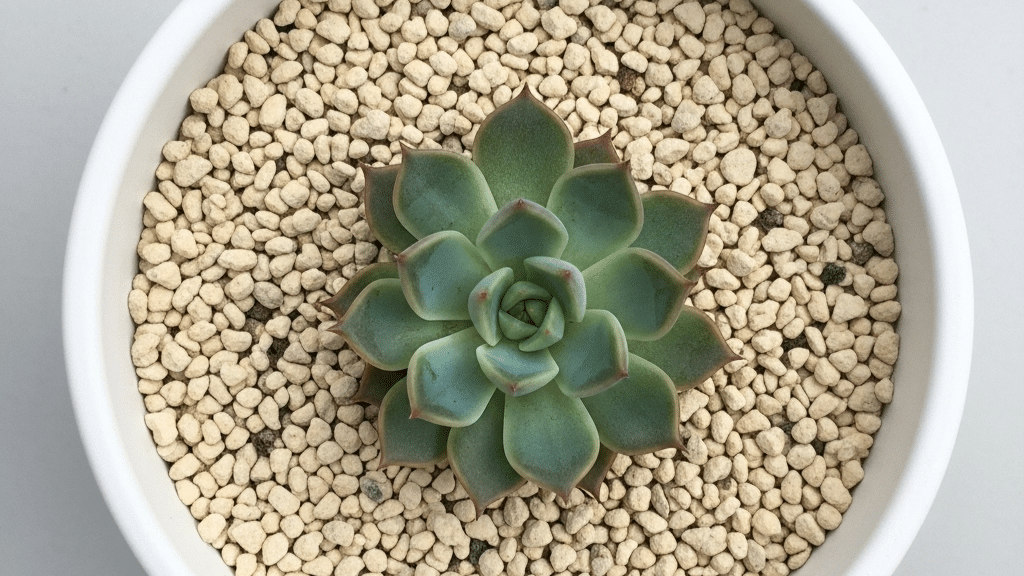
Add decorative gravel or rocks for a polished look. This also helps keep water from splashing onto the leaves. The top dressing should be about a quarter-inch thick and cover the soil surface completely. This layer also helps soil stay in place and reduces evaporation.
Step 6: Wait to Water
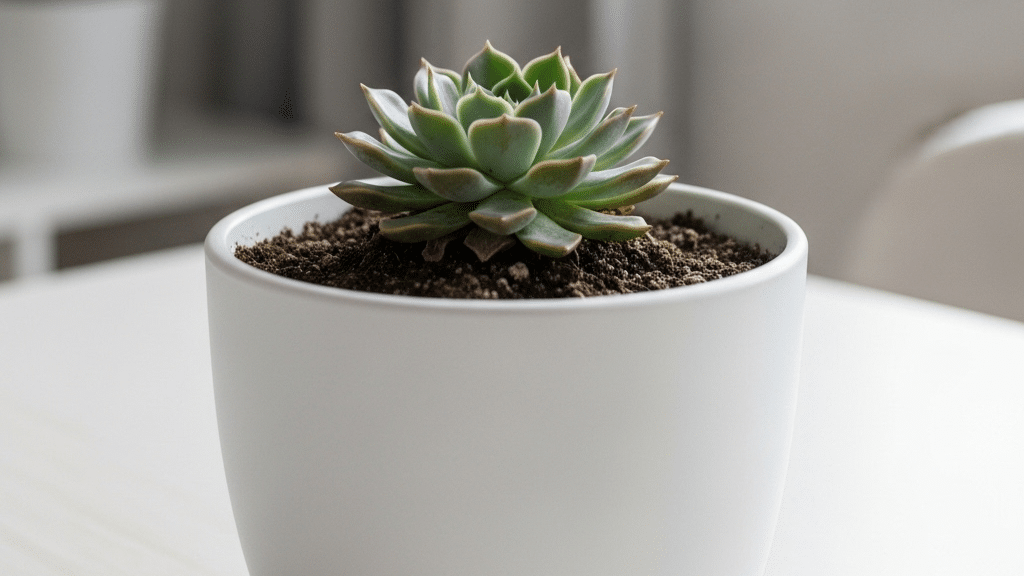
Let the plant settle for a couple of days before watering to allow any damaged roots to heal. Then, water thoroughly but ensure the soil dries out completely before the next watering.
This waiting period helps reduce shock and gives your succulent time to adjust to its new environment.
Grow the Population by Propagating Succulents
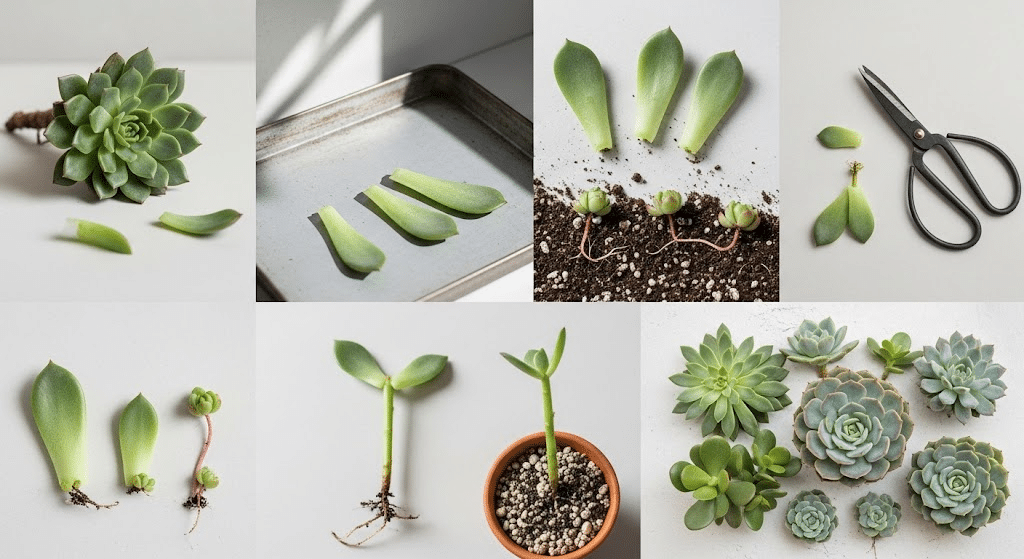
Propagating succulents is a fun way to multiply your plants without spending extra money. Here’s how to propagate succulents using two beginner-friendly methods that work well for most varieties.
Both methods are simple and require minimal supplies. You’ll need clean scissors, well-draining soil, and a bit of patience. The best time to propagate is during spring or early summer when plants grow most actively.
Leaf Propagation Method
1. Choose a Leaf: Select a healthy, plump leaf from the base of the plant. Gently twist it off to ensure a clean break. Avoid damaged or yellowing leaves as they won’t root properly.
2. Let It Callus: Place the leaf in a dry, shaded spot for 2-3 days, allowing the cut end to form a callus, which prevents rotting. This step is essential for success.
3. Plant the Leaf: Lay the leaf on top of well-draining soil or lightly press the callused end into the soil. Mist lightly every few days to keep the soil slightly moist.
4. Wait for Growth: In a few weeks, tiny roots and a new plantlet should form. Once the new plant is established, treat it like a mature succulent.
Stem Cutting Propagation Method
1. Take a Cutting: Use clean, sharp scissors to cut a healthy stem with a few leaves from the parent plant. Cut just above a leaf node for best results.
2. Let It Callus: Allow the cut end to dry and callus for a few days in a shaded area. This prevents bacterial infections.
3. Plant the Cutting: Bury the callused end about an inch deep in well-draining soil. Choose a small pot that fits the cutting size.
4. Care for It: Water sparingly until the roots develop, which usually occurs within a few weeks. Then, care for it as you would any succulent.
Both methods have high success rates when done correctly. Begin with easy varieties, such as jade plants or echeveria, for your first attempts.
Best Succulents for Beginners

The following varieties are ideal for beginners because they are forgiving of mistakes and adapt well to indoor conditions.
Start with one or two types, then expand your collection as you gain experience.
| Succulent Name | Light Needs | Watering Frequency | Special Features |
|---|---|---|---|
| Jade Plant | Bright, indirect | Every 2-3 weeks | Thick, glossy leaves; very forgiving |
| Aloe Vera | Bright light | Every 2-3 weeks | Healing gel in leaves; fast-growing |
| Echeveria | Bright light | Every 1-2 weeks | Rosette shape; comes in many colors |
| String of Pearls | Bright, indirect | Every 2-3 weeks | Trailing vine; great for hanging baskets |
| Sedum | Full sun to partial shade | Every 1-2 weeks | Spreads quickly; perfect ground cover |
| Haworthia | Low to bright light | Every 2-3 weeks | Striped patterns; tolerates low light |
| Crassula | Bright light | Every 2-3 weeks | Stacked leaves; compact size |
| Kalanchoe | Bright light | Every 1-2 weeks | Colorful flowers; long blooming period |
Designing and Decorating with Succulent Plants
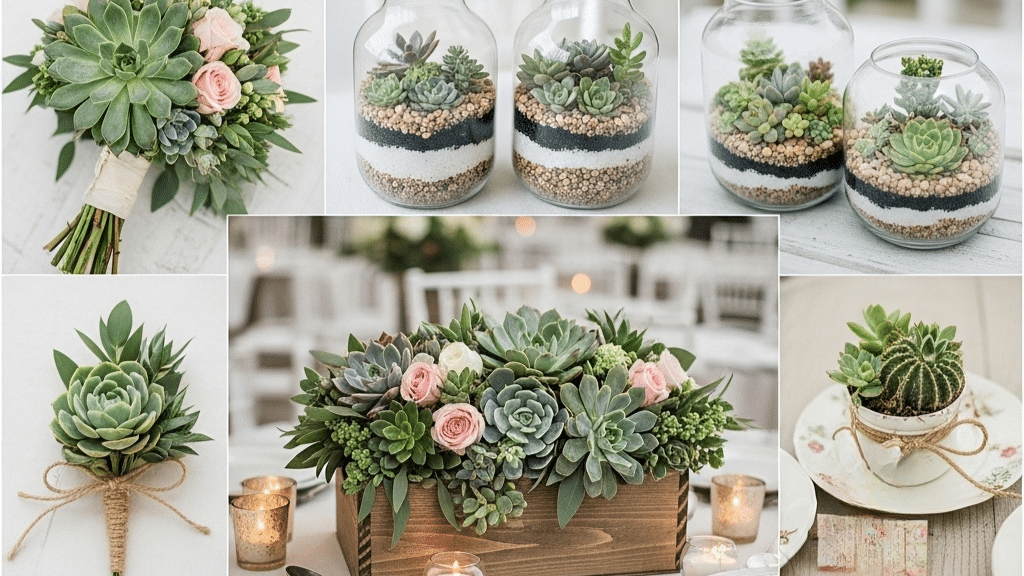
Succulents make stunning decorative elements for any space or special event.
Their unique shapes, colors, and low-maintenance nature make them perfect for both temporary displays and permanent arrangements. You can create beautiful designs that last for months with minimal care.
These versatile plants work well in modern, rustic, or traditional settings. Their natural beauty adds texture and interest without overwhelming other design elements. Plus, guests can take home live plants as memorable keepsakes.
Wedding Decor Ideas
Succulents bring natural beauty to wedding celebrations, remaining fresh throughout long events. They photograph beautifully and won’t wilt under hot lights or outdoor conditions.
Popular wedding uses include:
- Centerpieces – Mix different varieties in wooden boxes or glass terrariums
- Boutonnieres – Small rosette varieties like echeveria work perfectly
- Bridal bouquets – Combine with flowers for unique texture and lasting beauty
- Ceremony decorations – Line aisles with potted arrangements
- Place cards – Attach name tags to small potted succulents
Container Arrangements
The right container makes your succulent display shine. Select containers that complement your space while ensuring proper drainage for optimal plant health.
Container options and tips:
- Shallow bowls – Perfect for creating landscape-style arrangements with multiple plants
- Hanging planters – Show off trailing varieties like string of pearls
- Vintage finds – Old teacups, boots, or tin cans add character
How to Keep the Succulents Safe from The Bugs
Bugs can quickly damage your beautiful succulent collection if you don’t catch them early. Regular inspection and quick action will keep your plants healthy and thriving.
- Check your plants weekly for signs of trouble, such as white, cotton-like spots, tiny moving dots, or sticky residue on the leaves.
- Look for yellow or brown spots on leaves, which often signal pest damage
- Keep plants properly spaced for good air flow to prevent bug infestations
- Avoid overwatering, which attracts bugs and weakens plants
- Quarantine new plants for two weeks before adding them to your collection
- Spray affected areas with rubbing alcohol using a cotton swab for small pest problems
- Remove heavily damaged leaves immediately to prevent spread to other plants
Wrapping It Up
You now have everything you need to grow beautiful succulents successfully. From selecting the right containers to mastering propagation techniques, these skills will serve you well for years to come.
Remember that learning how to plant succulents is just the beginning of your gardening story. Each plant teaches you something new about patience and care. Start with one or two varieties, then expand your collection as your confidence grows.
What will you plant first?


